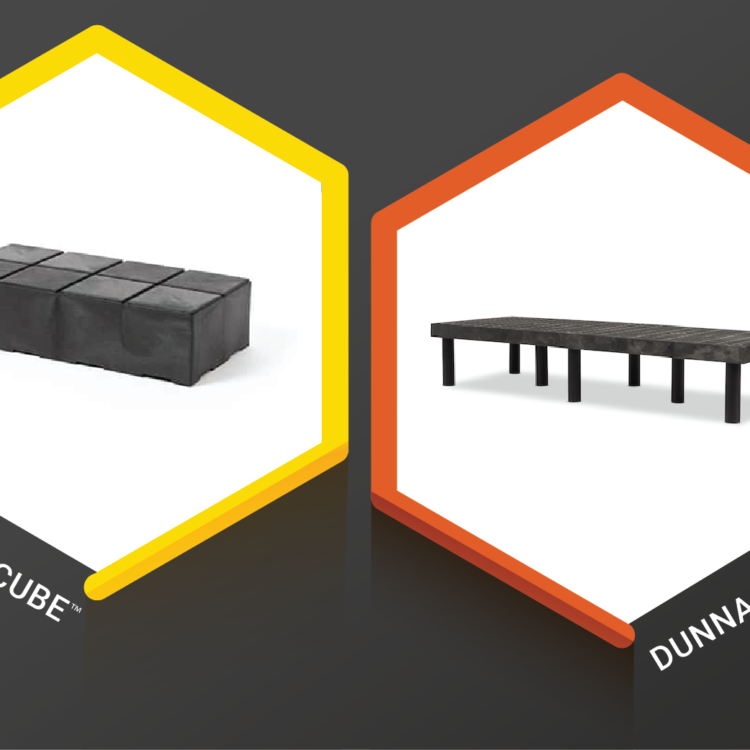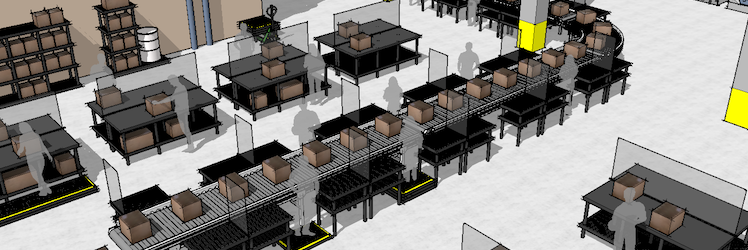The Value of Choosing The Proper Containment Solution for Hazardous Materials

When you take strategy to action, details matter. You can have a broad idea of what your containment strategy is, but that’s useless if you don’t get the details right. Every organization should be asking the following questions:
- Are all chemicals properly labeled?
- Is there emergency equipment located near the area in case of an emergency?
- Does proper secondary containment protection exist in the workspace?
These are just a few questions that will help ensure every last measure is in place to make your lab, warehouse, or other workspace as safe as possible.
Whether you are running a laboratory, chemical storage facility, or warehouse, establishing a thoughtful handling and storage protocol will help keep your employees safe and ensure your products last. There is no “one size fits all” containment approach that works best in every situation. Your containment solution for hazardous materials will differ based on the materials themselves, how often they are used and transported, and even the expertise of your employees.
Although OSHA requires secondary contaiment for hazardous materials, the organization does not offer a specific method or best practice guidance. Having the freedom to implement a system that works for you can be a bonus but can often leave organizations struggling to get started.
To develop and implement an effective containment strategy, you’ll need to conduct an internal risk analysis. Understanding the components of beneficial containment strategies, and asking yourself the detailed questions to get it right will keep you on the track towards success. Today is the day to be proactive and take the steps to ensure your warehouse is safe from hazardous spills or injuries. We’ll outline all that you need to know and even give you some helpful product recommendations to put your strategy into practice.
Conducting an Internal Risk Analysis
As with any strategic plan, getting a clear picture of your organization’s current state is the first step. You have to understand what you’re up against to remedy it. Executing your internal risk analysis is a 3-step process:
1. Identify Potential Risk Factors
You know your environment best; are there materials lying around that could pose tripping hazards? Do you use an organized labeling system for hazardous chemicals?
If your chemical storage area is unorganized and without a proper system, it could potentially endanger lives. Some chemicals should not be near other specific chemicals, and some require extra careful handling. If it feels like you’re taking a gamble every time you enter that area, it’s time for a new approach.
2. Address Risks and Propose a Solution for Each
Once you have identified the risks you’re dealing with, you can come up with a proper solution for each of them. To set up a decontamination station, you’ll need raised flooring solutions such as Add-A-Level™ and Poly-Riser™. You also might want to use a shelving solution like DuraShelf® to organize any washes or other tools that your employees might need during the decontamination process.
To simplify your chemical storage area and ensure it’s as organized as possible, we recommend implementing a color-coding system so all of the chemicals are in a safe spot. Then, use DuraShelf® or Dunnage-Rack™ to store all of your chemicals. These solutions are non-corrosive and chemically resistant, making them great options for storing hazardous materials.
3. Implement Solutions Prior to Interacting with Chemicals
If there are already hazardous materials in your workplace, it’s never too late to implement a better storage strategy. However, it is ideal to put the necessary structures and systems in place before bringing dangerous materials into the space.
Understanding Effective Containment Strategies
Even the best storage solutions will fail to serve your situation if you do not have an effective containment strategy. An effective containment strategy must include:
Awareness
Solving any problem requires awareness that the problem exists. Poor storage of hazardous materials is a problem that could cost millions and injure or harm your staff. Be sure to implement continuous safety guidelines in your warehouse or lab that can keep an eye on current safety practices and raise awareness of any gaps that may exist.
Communication
When a problem is identified or a new plan is going to be put into place, communication is key. A color-coded labeling system for various chemicals is useless if your entire team does not know what each color means. If anything is going to change in a warehouse, your employees need to be briefed, trained, and reminded regularly. Communication is an ongoing effort and refreshers may be needed throughout the year.
Proper Tools/Products
Having the proper tools on hand is necessary to ensure the safety of your employees. Using the proper equipment can eliminate safety hazards and assist your employees in efficiently getting the job done. We understand that every warehouse or facility has different needs, so we pride ourselves in our versatile product solutions that fit the needs of most any industrial setting.
Precaution is Priceless
Don’t skimp on products that will lead to a safer workplace. Sure, budgets are tight, and it can be tempting to go for the cheapest options available, but quality should be your number one metric. At SPC Industrial™, quality is what you’re going to get each and every time. We see ourselves as partners in safety, strategy, and implementation, so if you’re ever unsure about which product will be best for your needs, reach out to our team and we’ll help you make a decision. We have a wide array of offerings and work with clients across many different industries and locations.


